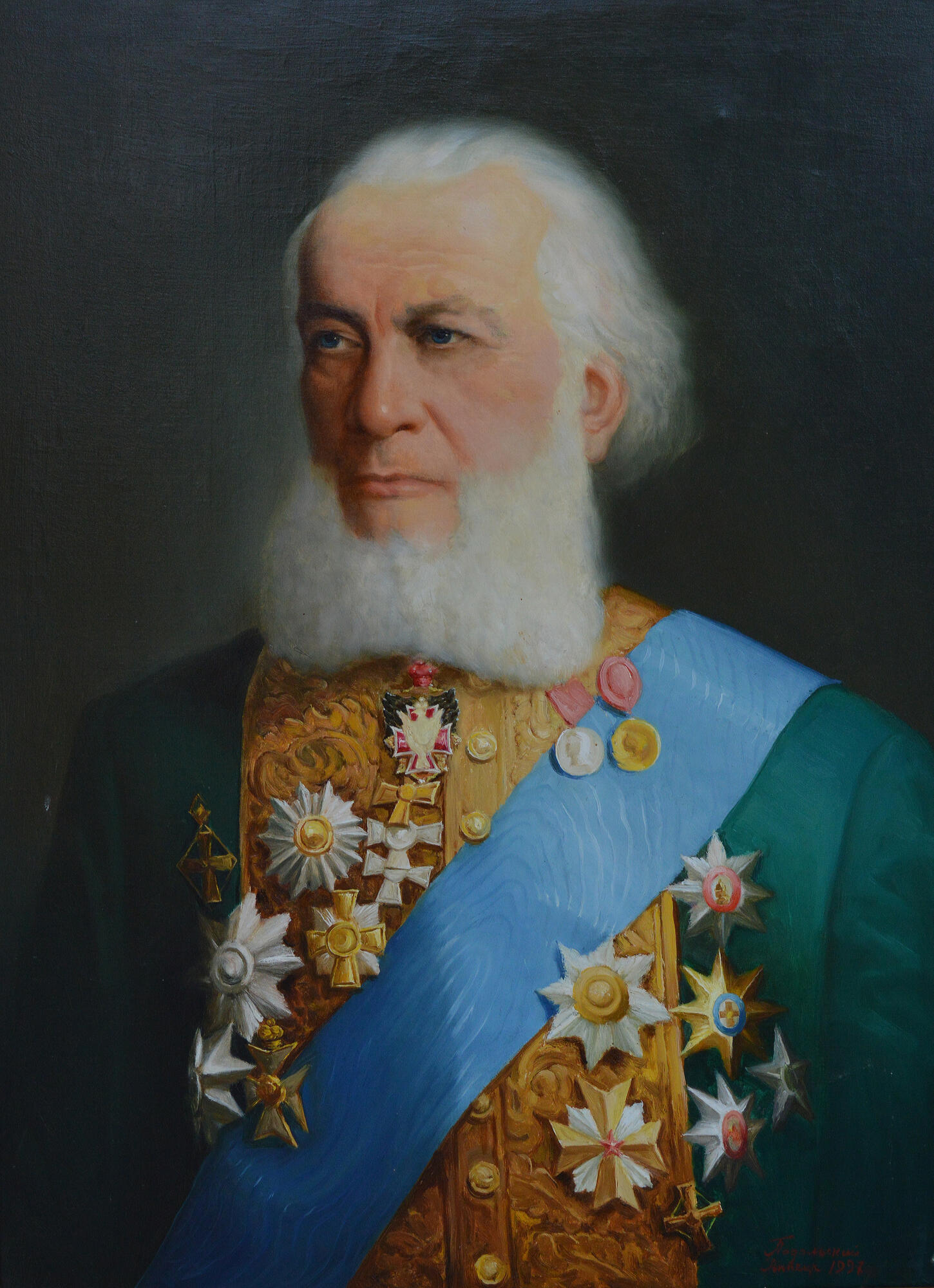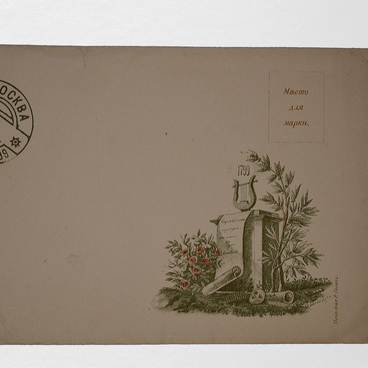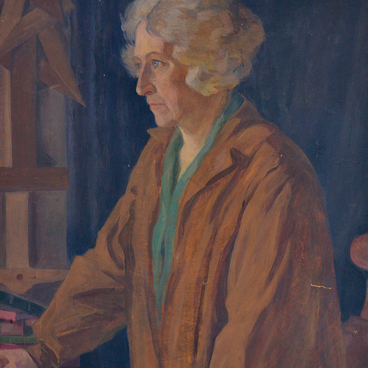In the portrait, Pyotr SemyOnov-Tyan-ShAnsky is depicted in a ceremonial uniform with orders and a blue ribbon of the Order of St. Andrew over his shoulder. At the time, Pyotr Semyonov-Tyan-Shansky had the rank of a real privy councilor, the highest rank in pre-revolutionary Russia and reached the peak of his scientific and state activity. The portrait was painted by the Lipetsk artist Vladimir PodOlsky in 1977. The source for it was the official black-and-white photo of the scientist of the early 20th century. In 1997, the master created an author’s copy specifically for the opening of the museum-reserve. Pyotr Semyonov-Tyan-Shansky is considered a pioneer in the study of the Tyan Shan, a mountain system located in Central Asia. For his scientific achievements, in 1906, the epithet ‘Tyan‑Shansky’ was added to the name of the scientist. He compiled the first detailed scheme of mountain ranges, discovered many new plant species unknown to science and gathered a collection of rocks.
No less impressive was his state and social activities. In 1873, Semyonov-Tyan-Shansky was elected vice-chairman of the Imperial Russian Geographical Society. He was in this post until his death. In fact, he headed the work of society, because the post of the chairman was traditionally held by members of the imperial family. During his leadership, four branches of the society were opened in different parts of the country and more than 170 expeditions were organized.
In 1882, he became a senator, dealt with the peasant issue and was a member of the State Council. Since 1905, he became chairman of the AleksEevsky Main Committee for the Care of the Children of Those Who Died in the War with Japan.
In addition, Semyonov-Tyan-Shansky was an honorary member of the Academy of Sciences and the Saint Petersburg Academy of Arts, as well as a full member of all Russian universities. He was awarded the highest honors by many European scientific societies. More than two dozen geographical locations in Europe, Asia and America, streets, educational institutions and libraries in Russia and Ukraine are named after him. Peter Semyonov-Tyan-Shansky also assembled an impressive collection of paintings by Flemish and Dutch artists of the 16th and 17th centuries, which can now be seen in the Hermitage.
No less impressive was his state and social activities. In 1873, Semyonov-Tyan-Shansky was elected vice-chairman of the Imperial Russian Geographical Society. He was in this post until his death. In fact, he headed the work of society, because the post of the chairman was traditionally held by members of the imperial family. During his leadership, four branches of the society were opened in different parts of the country and more than 170 expeditions were organized.
In 1882, he became a senator, dealt with the peasant issue and was a member of the State Council. Since 1905, he became chairman of the AleksEevsky Main Committee for the Care of the Children of Those Who Died in the War with Japan.
In addition, Semyonov-Tyan-Shansky was an honorary member of the Academy of Sciences and the Saint Petersburg Academy of Arts, as well as a full member of all Russian universities. He was awarded the highest honors by many European scientific societies. More than two dozen geographical locations in Europe, Asia and America, streets, educational institutions and libraries in Russia and Ukraine are named after him. Peter Semyonov-Tyan-Shansky also assembled an impressive collection of paintings by Flemish and Dutch artists of the 16th and 17th centuries, which can now be seen in the Hermitage.



